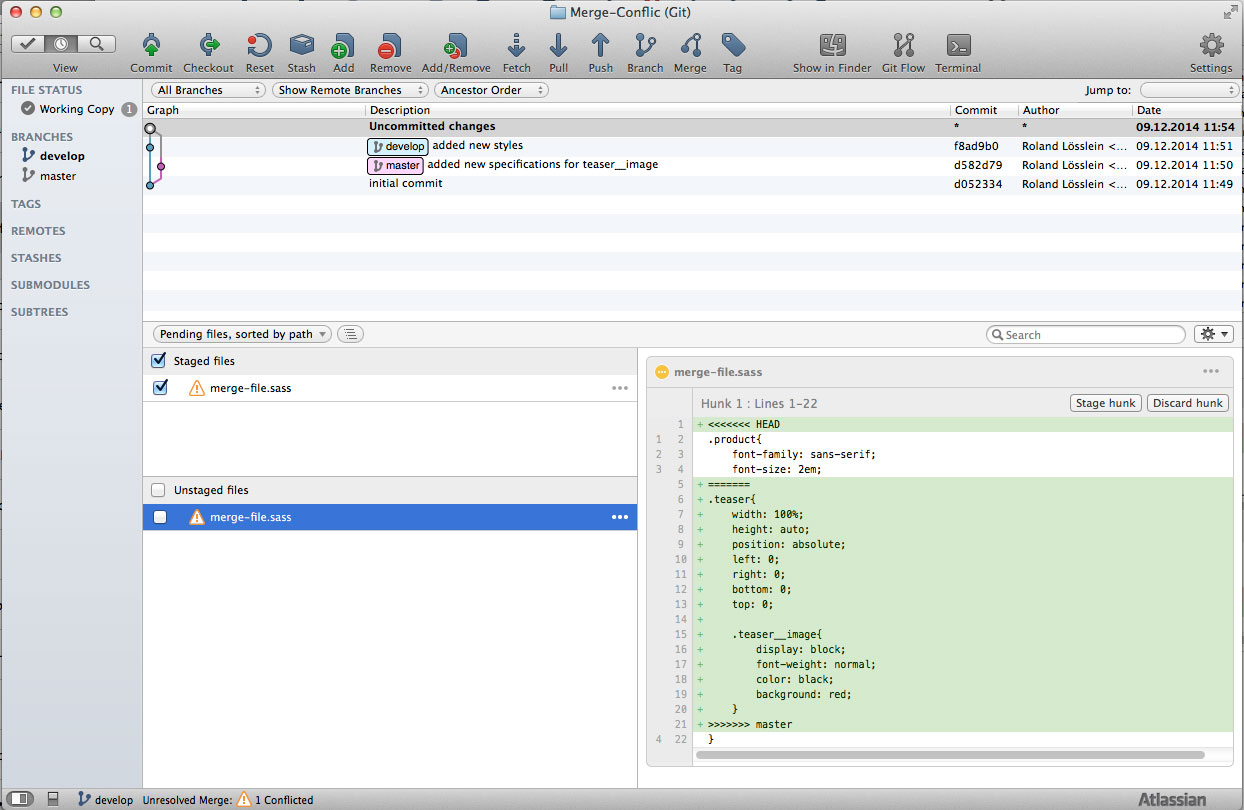

- #Checkout in sourcetree not working how to#
- #Checkout in sourcetree not working install#
- #Checkout in sourcetree not working code#
All you need is your Heroku app’s name: $ heroku git:remote -a example-appīy default, the Heroku CLI names all of the Heroku remotes it creates for your app heroku.

You can use the git remote command to confirm that a remote named heroku has been set for your app: $ git remote -vĪdd a remote to your local repository with the heroku git:remote command. If you run this command from your app’s root directory, the empty Heroku Git repository is automatically set as a remote for your local repository. The heroku create CLI command creates a new empty application on Heroku, along with an associated empty Git repository. Use GitHub (recommended), GitLab, BitBucket, or another version control system to track your codebase. While Heroku Git is convenient for deployment, it’s not intended to be a stable git repository. git/Ĭreated initial commit 5df2d09: My first commitĤ4 files changed, 8393 insertions(+), 0 deletions(-)Ĭreate mode 100644 app/controllers/source_file The following example demonstrates initializing a Git repository for an app that lives in the example-app directory: $ cd example-app
#Checkout in sourcetree not working code#
You must have Git and the Heroku CLI installed to deploy with Git.īefore you can deploy your app to Heroku, initialize a local Git repository and commit your application code to it.
#Checkout in sourcetree not working install#
Prerequisites: Install Git and the Heroku CLI If you already track your code in GitHub, consider deploying with the Heroku GitHub integration instead of following the steps in this article.
#Checkout in sourcetree not working how to#
This article describes how to deploy code using Git and Heroku Git remotes. You don’t need to be a Git expert to deploy code to Heroku, but it’s helpful to learn the basics. Heroku manages app deployments with Git, the popular version control system. Deploy Code Tracked in Subversion or Other Revision Control Systems.Prerequisites: Install Git and the Heroku CLI.Please visit my blog if you are interested to discover more about Git or web development technologies like TypeScript. When I need to do it in my day-to-day life, I usually use the git checkout command. Final thoughtsĪs you can see, getting a file from another branch is not rocket science. Note: You need to specify the relative path from your directory's root this time. git show feature/B:path/utils.js > path/utils.js Solution 3: Use the git show commandįinally, we can use the git show command.ġ. git restore -source feature/B - utils.jsģ. Switch to the branch where you want to checkout the file. Here is the process to follow to get a file from another branch:ġ. The git switch command switches branches. The git restore command restores the working tree. The purpose of those two commands is to split up the git checkout command's responsibilities to simplify it for users. Git introduced them in version 2.23 in 2019.

If you have never heard about those two commands, that's alright. Solution 2: Use the git restore commandĪnother option is to use the git switch command with the git restore command. Multiple files by specifying each one of them.Īlso, note that you can get a file/folder from the stash.When using the checkout command, you can also get: Use the git status command to ensure that the file has been copied. Once you are on the correct branch, copy the file. Checkout to the branch where you want to copy the file. Here is the syntax to checkout a file from another branch: git checkout - path/to/your/folderġ. The git checkout command offers a simple way to get a file or a folder from another branch. Here are three possible solutions for this task. You want to checkout that file and bring it from the branch called feature/B to the branch called feature/A. You have another branch called feature/B with an updated utils.js file. You are working on a branch called feature/A containing a file named utils.js. In this article, we will analyze different solutions to this problem and go through the process you'll need to follow for each. One of the easiest solutions is to use the git checkout command with the specified file as an argument. Luckily, Git offers many possible ways to do this task quickly. While you're working on a repository in Git, you might need to checkout a specific file from another branch.


 0 kommentar(er)
0 kommentar(er)
